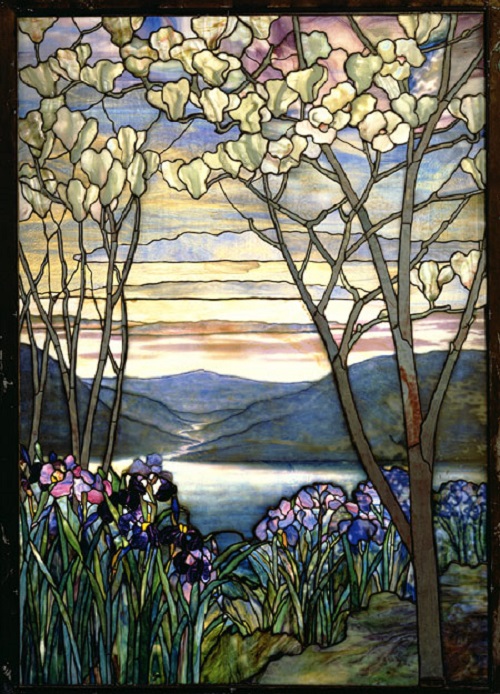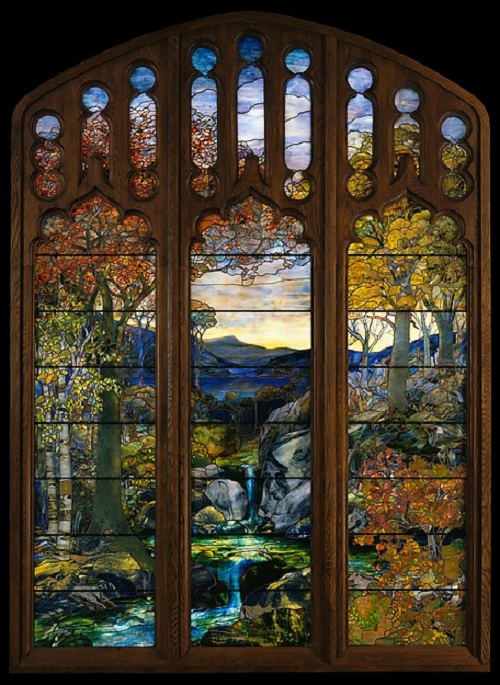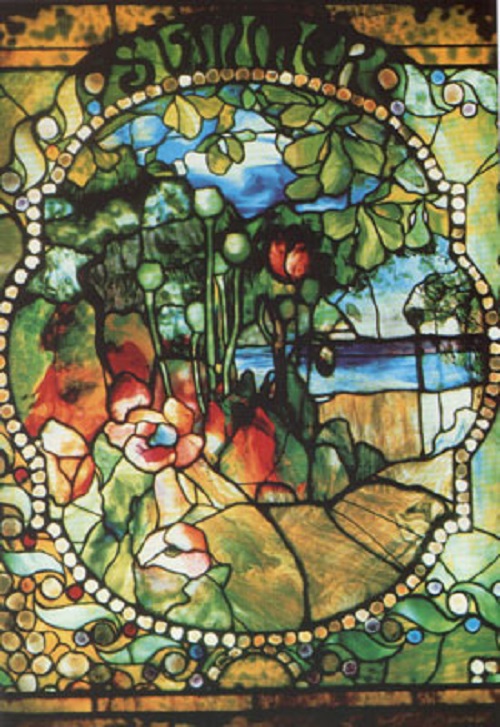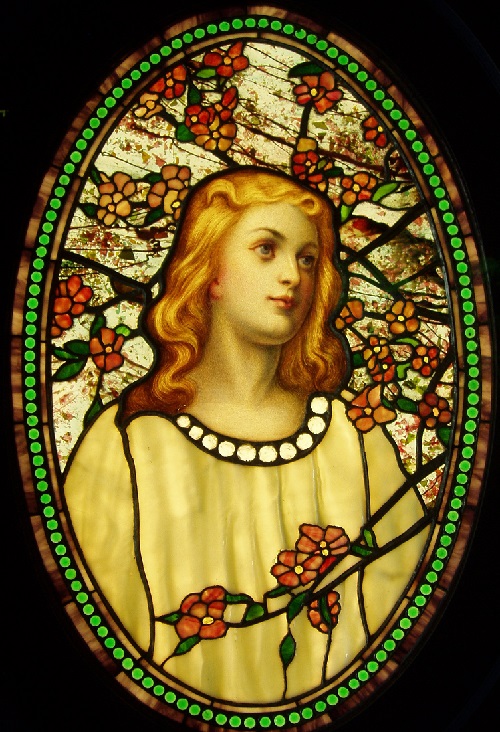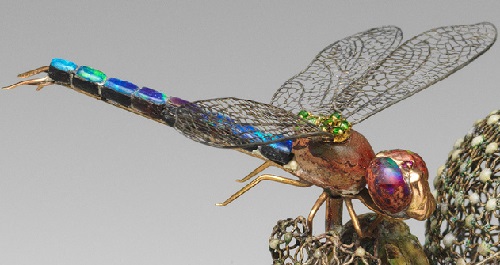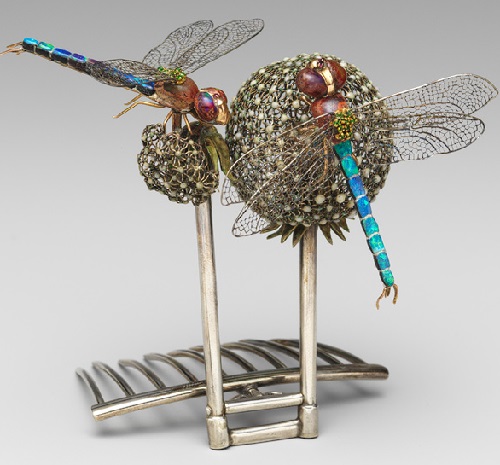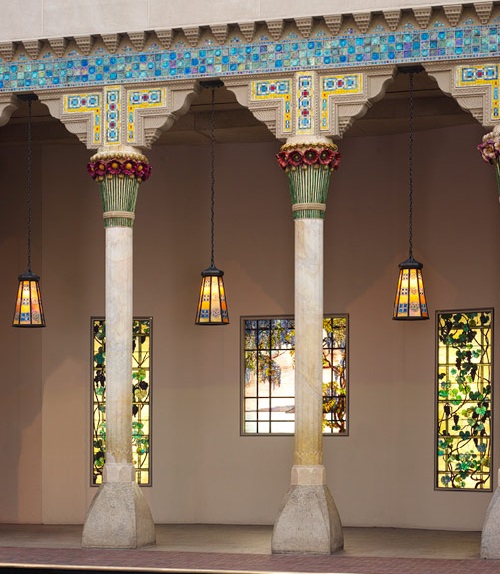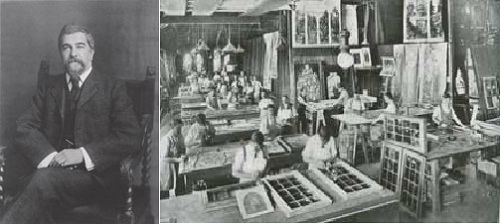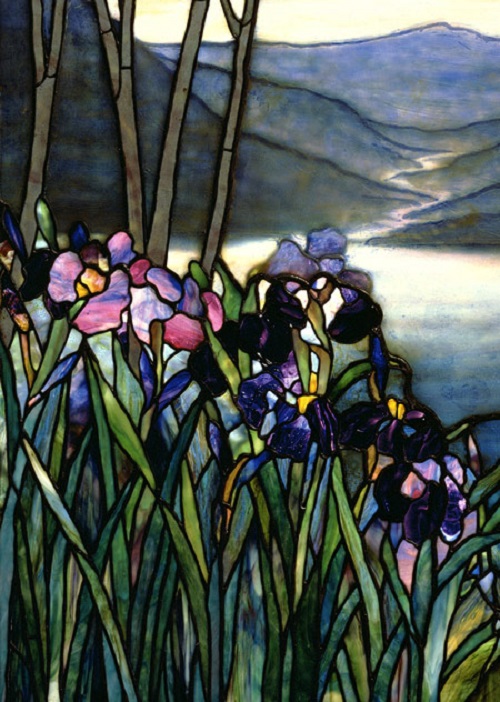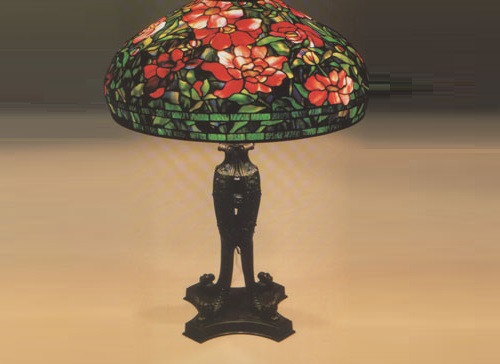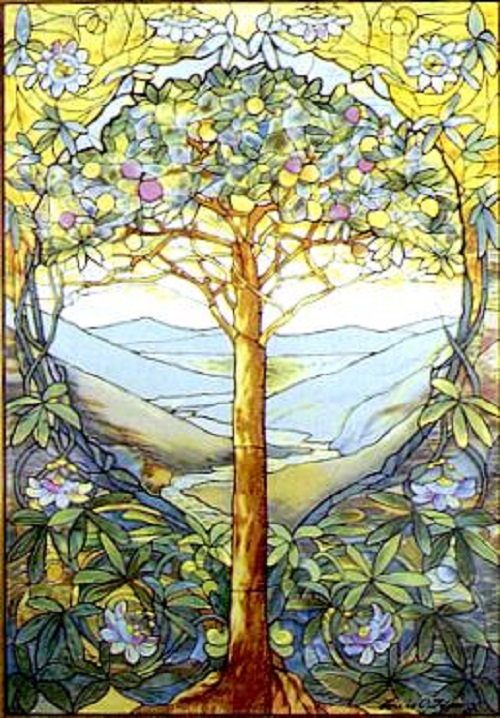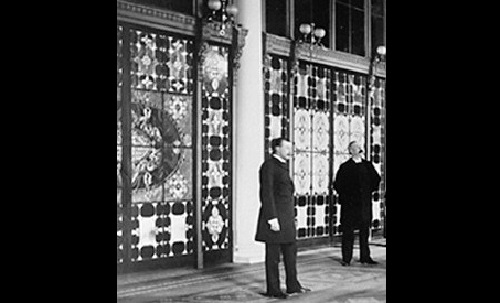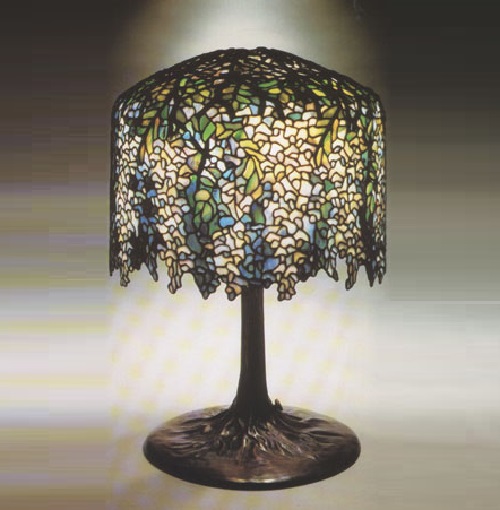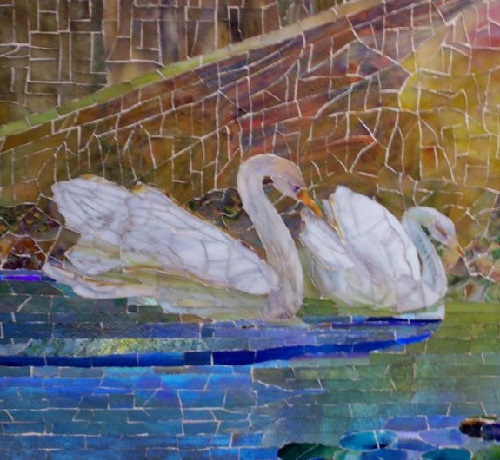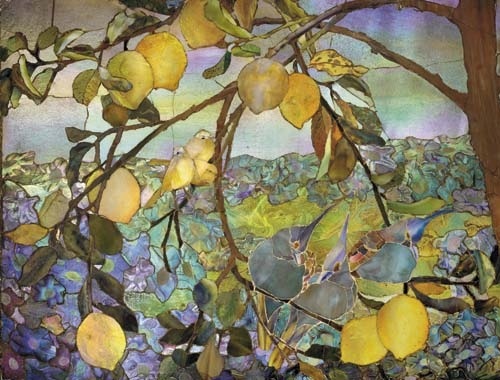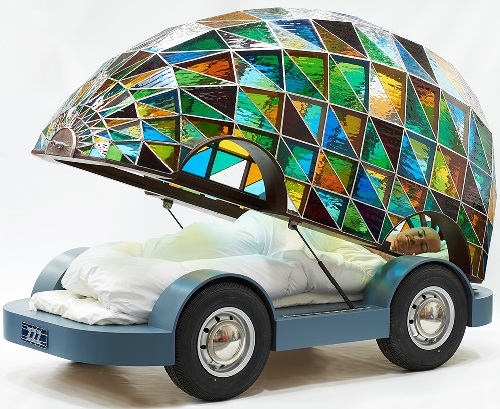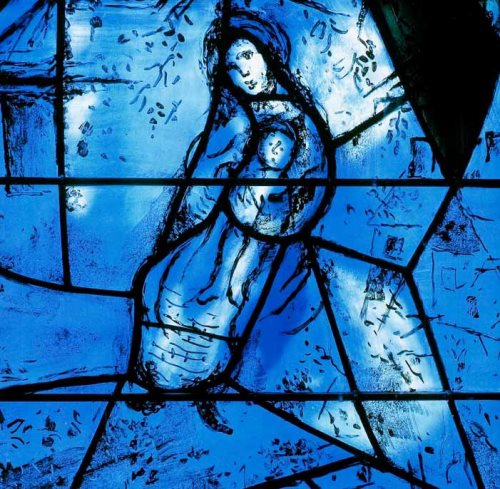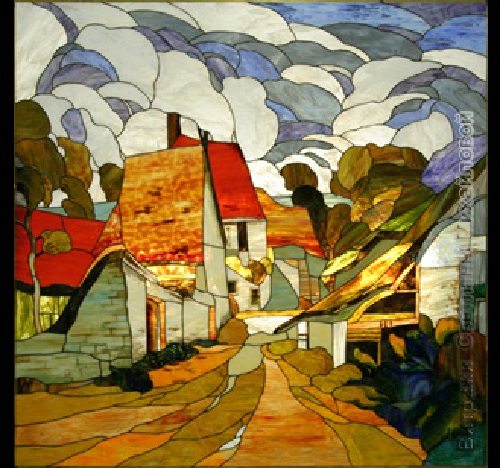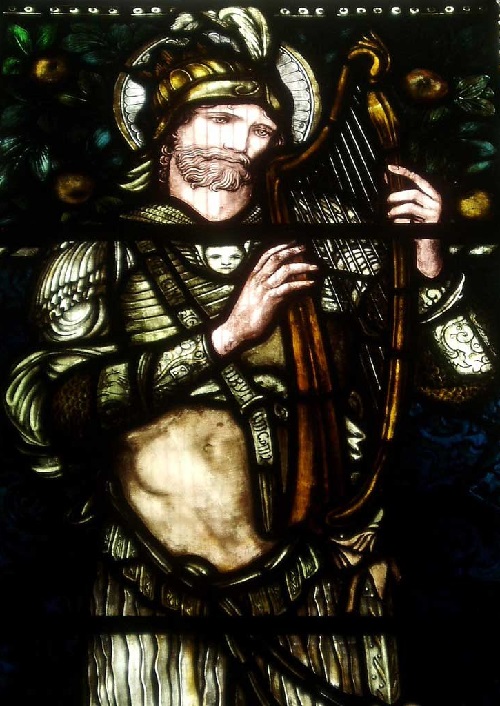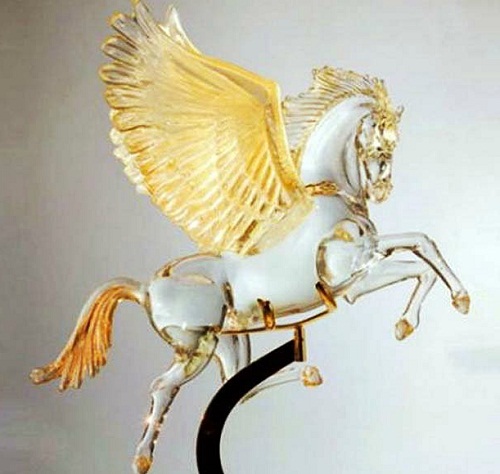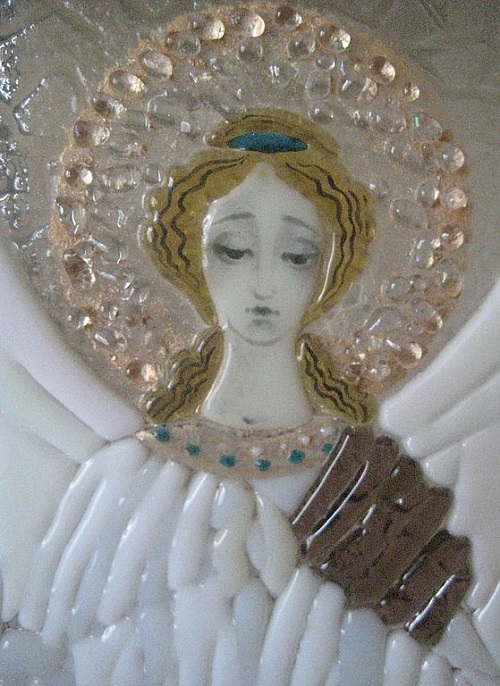Louis Comfort Tiffany stained glass art
Louis Comfort Tiffany stained glass art
The most brilliant representative of stained Art Nouveau creations, Louis Comfort Tiffany (1848-1933) was the son of wealthy parents. His father, Charles founded the jewelry firm “Tiffany and Co”, and the younger Tiffany studied painting in Paris and traveled through France, Spain and North Africa. Noteworthy, the huge impression on him made the stained glass of Chartres Cathedral. Also, the “Movement Arts and crafts” influenced the ideas and the choice of Tiffany decorative art.
In parallel with the general economic recovery, increased interest in luxury in everyday life. Created by Lewis in 1879 with Candace Wheeler and Samuel Colman company “Louis C. Tiffany and Associated Artists” offered a wide selection of products for highly interiors of houses. In particular, furniture, textiles, glass, and design of interiors.
In 1882, the company received an order for Tiffany interior design of the White House from US President Chester Alan Arthur. (Unfortunately, destroyed at a reconstruction of the neoclassical style of the White House 20 years later). Also, Tiffany decorations furnished Vanderbilts, Osborn, Taylor, Carnegie, Mark Twain, and others during 1880-1890.
Meanwhile, in 1883 the divided company Tiffany and Lewis switched to the design of the glass. However, Louis was not satisfied with the technology of glass painting. According to him, their glass art diminished the natural beauty and possibilities of glass.
And the success became possible, thanks to the wide application of new techniques of stained glass assembly. A new method for assembling stained glass later received the name “Tiffany technique”.
In 1880, Louis founded Glass Company “Storbridge” in Long Island, where he continued his experiments with oxides of gold, silver, copper, and cobalt. He produced this glass not only in the USA, but it became known as “American”. In fact, similar glass made in England, France, Austria and Bohemia, but Tiffany first began producing art glass on an industrial scale.
In the 1890s in New York, there were more than 60 different design firms, and almost all of them worked with glass. But the real competitor for Tiffany was La Farge. Both developed their own production technology of glass and each has achieved the highest quality of work in the field of stained glass. Independently competitors began to use the technology of laminated glass in stained glass to achieve the desired color or shade. Meanwhile, Tiffany hired the best glassblowers and chemists from England and Italy for their experiments. And, if necessary, they made the only original piece of glass. As a result, Tiffany glass cornered the market.
At the Chicago International Show 1893 Tiffany presented the Chapel. Mosaics and stained glass windows of the chapel of “flaming” glass, pearl and semi-precious stones have been enthusiastically received by the public. In fact, Tiffany acquires international fame. Back in the mid 80s, Louis Comfort Tiffany organized unit for the production of stained glass on religious subjects on the orders of the Catholic Church. Chapel, founded by Tiffany used the Byzantine style with modern taste. It includes 12 stained glass windows and interior of colored glass. Tiffany received numerous prizes and medals for this work.
Louis Comfort Tiffany stained glass art
Also in 1893, Louis met with the chief patron of Art Nouveau – S. Bing. Bing Gallery “L’Art Nouveau” was the center of attraction for all the ideas and the names of the “new art.” In 1895 Bing visited the workshops of Tiffany in Paris and organized the orders of the sketches for stained glass Tiffany. In addition, Tiffany entered the Parisian circle of acquaintances. One of his wishes was to prove that none can achieve that brightness of color and light, as his stained glass windows. In 1900, Bing has exposed windows of Tiffany “Four Seasons” in London, where they received a special medal.
Noteworthy, Louis Comfort Tiffany was no less skillful as a jeweler. His hair ornaments and other decorations based on nature – field flowers and wild fruit, as well as his affinity for enameling and semiprecious stones with unusual colors. The dragonflies rest on dandelion seedballs show the fragility of nature. Highly skilled transparency of the insects’ wings achieved through delicate filigree metalwork.
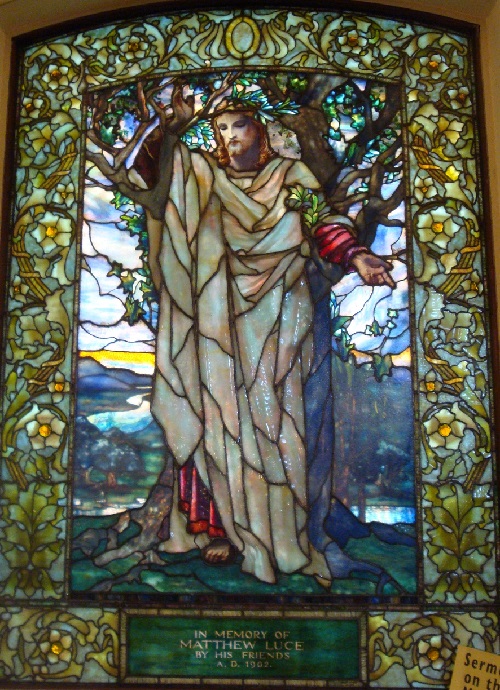
Arlington Street Church (Boston) depicting the Sermon on the Mount. Louis Comfort Tiffany stained glass art
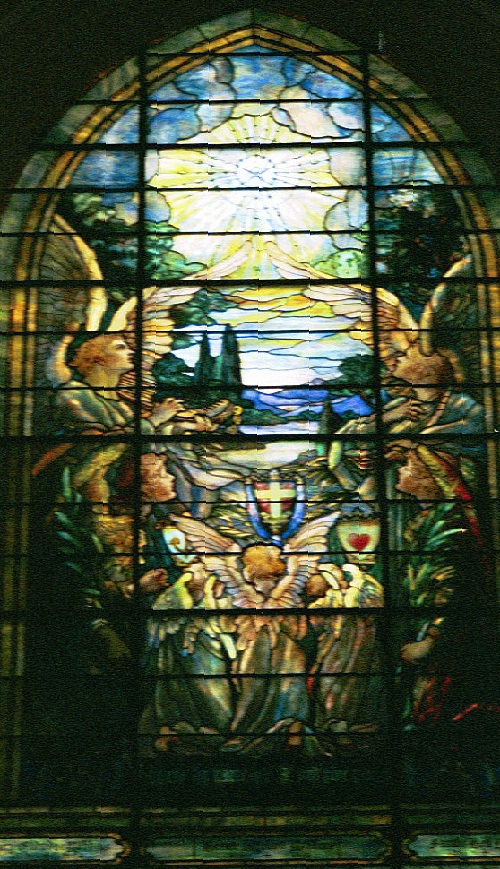
The New Creation, by Louis Comfort Tiffany Stained glass window at Brown Memorial Presbyterian Church, Baltimore, Maryland
metmuseum.org
